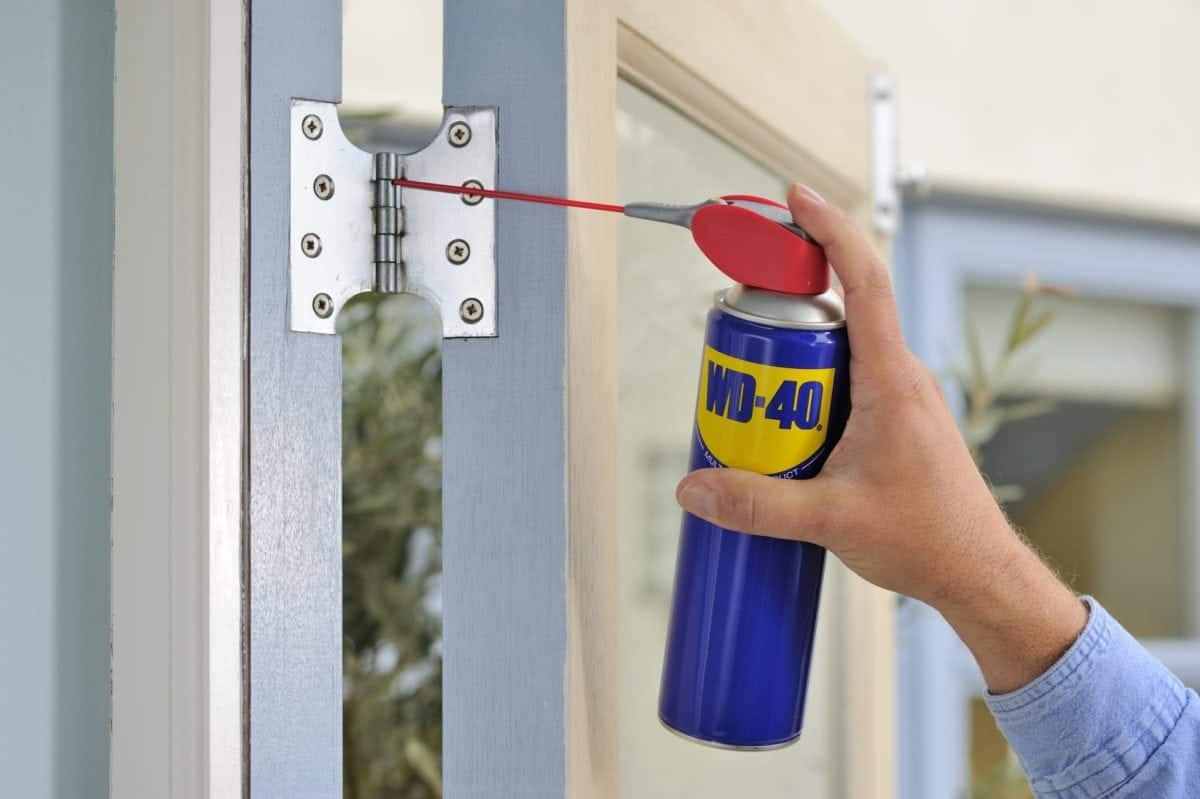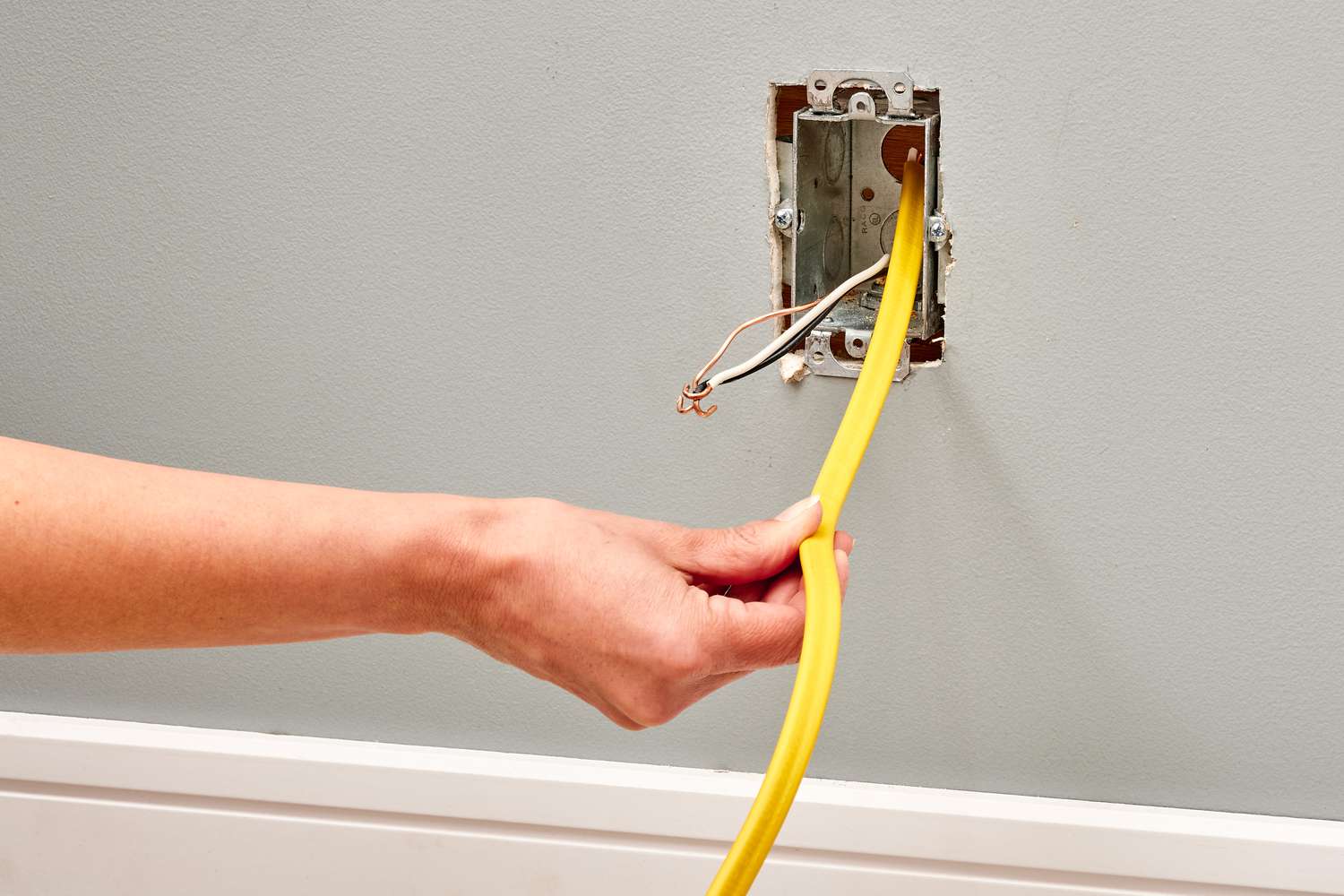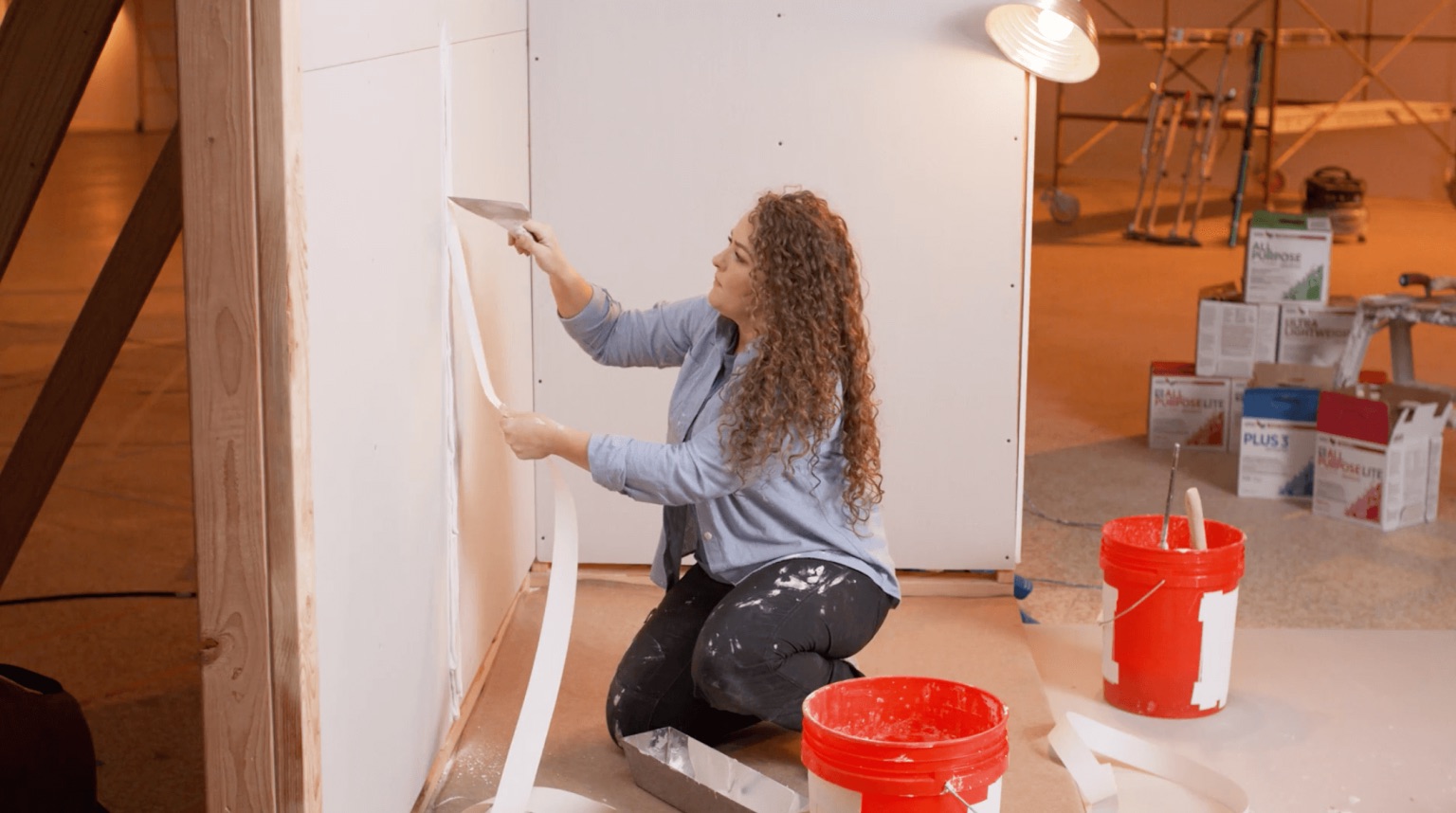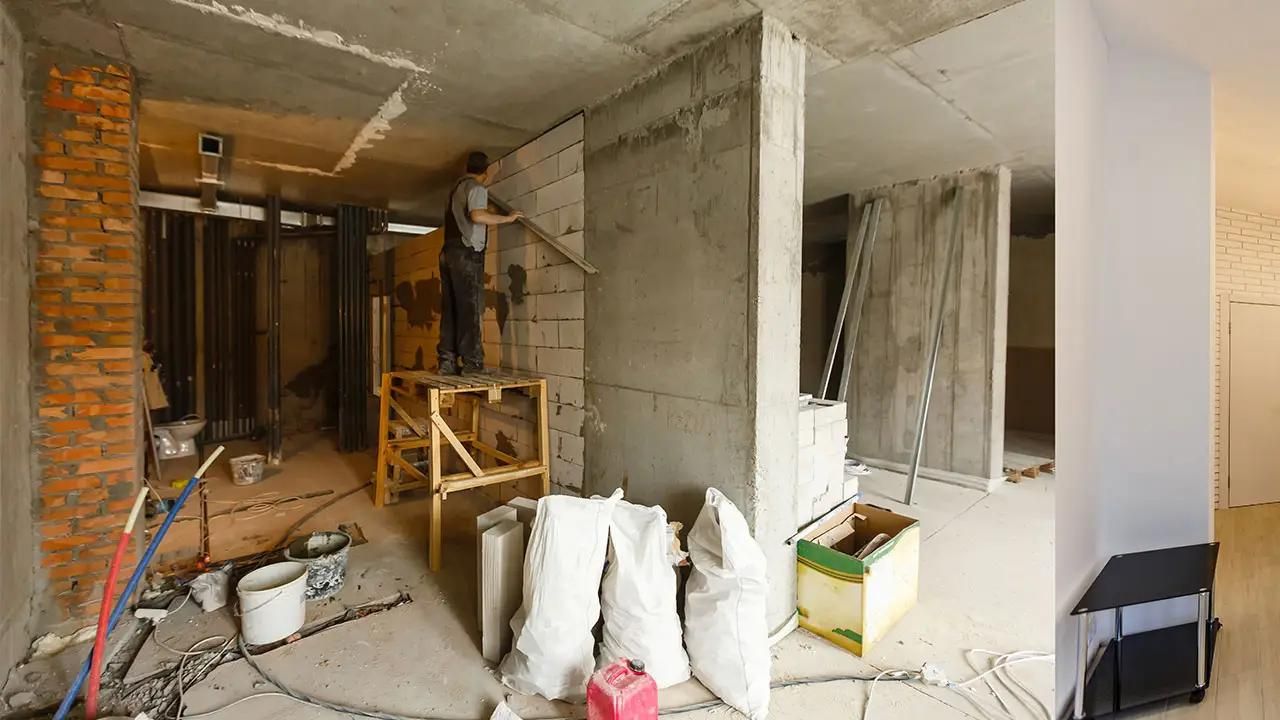Home>diy>Home Improvement>How To Claim The Home Renovation Tax Credit In Ontario


Home Improvement
How To Claim The Home Renovation Tax Credit In Ontario
Modified: December 7, 2023
Learn how to claim the home renovation tax credit in Ontario for your home improvement projects and save money. Maximize your tax benefits with our step-by-step guide.
(Many of the links in this article redirect to a specific reviewed product. Your purchase of these products through affiliate links helps to generate commission for Storables.com, at no extra cost. Learn more)
Introduction
Home improvement projects can be a significant investment, both in terms of time and money. Luckily, if you reside in Ontario, Canada, the Home Renovation Tax Credit (HRTC) can help offset some of those costs. The HRTC is specifically designed to provide financial relief to homeowners who undertake eligible renovation projects.
In this comprehensive guide, we will delve into the details of how to claim the Home Renovation Tax Credit in Ontario. Whether you are planning to renovate your kitchen, bathroom, or entire home, understanding the eligibility requirements, eligible expenses, and filing process is essential to maximize your tax credit.
It is important to note that the HRTC in Ontario is a non-refundable tax credit, meaning it can only be used to offset income tax owed and cannot result in a tax refund if the credit exceeds your tax liability. However, it can still save you a significant amount of money, making your home improvement project more affordable.
Before embarking on your renovation project, it is crucial to familiarize yourself with the eligibility requirements to ensure that your expenses will qualify for the tax credit. Let’s dive into the details of who is eligible to claim the Home Renovation Tax Credit in Ontario.
Key Takeaways:
- Claiming the Home Renovation Tax Credit in Ontario requires meeting specific eligibility criteria, documenting eligible expenses, and navigating the filing process accurately to maximize potential tax savings for your renovation project.
- Avoid common mistakes such as inaccurate documentation, claiming ineligible expenses, missing filing deadlines, and incorrectly calculating the credit amount when claiming the Home Renovation Tax Credit. Seek professional advice and utilize available resources to ensure a successful claim.
Read more: How To Claim Home Renovation Tax Credit
Eligibility Requirements
To be eligible for the Home Renovation Tax Credit in Ontario, you must meet the following criteria:
- You must be a resident of Ontario, Canada.
- You must be an individual homeowner. If you co-own the property with someone else, each owner can claim the tax credit separately.
- The renovation project must be for your principal residence, meaning it is the home where you live most of the time. Second homes, rental properties, and vacation homes are not eligible.
- The construction or renovation must be completed by a qualified contractor who is registered for the Goods and Services Tax/Harmonized Sales Tax (GST/HST).
It is important to note that the Home Renovation Tax Credit is not available for routine repairs or maintenance. The expenses must be related to significant renovations that improve the energy efficiency, accessibility, or functionality of your home. This can include projects such as adding insulation, installing energy-efficient windows, upgrading heating or cooling systems, or making modifications to accommodate individuals with disabilities.
Furthermore, the eligible expenses must exceed $1,000 but cannot exceed $10,000. Only expenses incurred between October 1, 2022, and December 31, 2022, are eligible for the HRTC. It is crucial to keep detailed records and receipts of all the expenses related to your renovation project to support your claim.
Now that you understand the eligibility requirements, let’s explore the types of expenses that qualify for the Home Renovation Tax Credit in Ontario.
Eligible Expenses
When claiming the Home Renovation Tax Credit in Ontario, it is important to understand the types of expenses that qualify. Here are some of the eligible expenses:
- Renovations that enhance the energy efficiency of your home, such as installing energy-efficient windows, doors, or insulation.
- Modifications to improve accessibility for individuals with disabilities, including installing ramps, widening doorways, or adding grab bars.
- Upgrades to heating, cooling, or ventilation systems that improve energy efficiency, such as installing a high-efficiency furnace or air conditioner.
- Renovations to improve the functionality or safety of your home, such as upgrading electrical systems, replacing roofing, or waterproofing basements.
It is important to note that the cost of tools or equipment rented or purchased for the renovation project does not qualify for the tax credit. Additionally, expenses for furniture, appliances, or decorative items are not eligible.
Before starting your renovation project, it is recommended to consult with a qualified contractor or tax professional to ensure that the expenses you incur will be eligible for the Home Renovation Tax Credit. They can help you determine which costs can be claimed and provide guidance on how to properly document and track your expenses.
Now that you are familiar with eligible expenses, let’s move on to the next step: gathering necessary documents.
“
Gathering Necessary Documents
When claiming the Home Renovation Tax Credit in Ontario, it’s crucial to gather and organize all the necessary documents to support your claim. This documentation will help validate the expenses incurred and ensure a smooth filing process. Here are some essential documents you should gather:
- Invoices and Receipts: Collect all invoices and receipts for the renovation expenses you incurred. These documents should clearly state the nature of the work, the cost, and the date of payment. Make sure the invoices and receipts are itemized, separating the eligible expenses from any non-eligible expenses.
- Contract or Agreement: Keep a copy of the contract or agreement between you and the qualified contractor who performed the renovations. This document should include details such as the scope of work, timelines, and payment terms.
- Proof of Payment: Retain proof of payment, such as bank statements, credit card statements, or cancelled checks, to verify that you have actually paid for the eligible expenses.
- Before and After Photos: Take before and after photos of the renovation project. These visual records can serve as evidence of the improvements made and help support your claim.
- Energy Efficiency Certificates: If your renovations focused on enhancing energy efficiency, ensure you have any relevant certificates or documents from the contractors or suppliers validating the energy performance of the installed products or materials.
- Other Supporting Documents: Depending on the nature of the renovations, you may need additional supporting documents. For example, if you made modifications to accommodate disabilities, you may need certification or documentation from a medical professional.
Keep all these documents in a safe and organized manner. It’s recommended to create a dedicated folder or file for your Home Renovation Tax Credit claim and keep copies of these documents for future reference. Remember that maintaining accurate and detailed records is essential to substantiate your claim and avoid any complications during the filing process.
With all the necessary documentation at hand, let’s move on to the next step: understanding the filing process for the Home Renovation Tax Credit.
“
Filing Process
Once you have gathered all the necessary documents, it’s time to navigate the filing process for the Home Renovation Tax Credit in Ontario. Here’s a step-by-step guide to help you through:
- Prepare Your Tax Return: Start by preparing your annual tax return using the appropriate tax forms or online tax filing software. Ensure you have accurate information about your income, expenses, and deductions for the tax year.
- Locate the Home Renovation Tax Credit Section: Look for the section specific to home renovation tax credits within your tax forms or software. The exact location of this section may vary depending on the platform you use.
- Enter the Relevant Information: Fill in the required information related to your eligible renovation expenses. This may include the total amount spent on renovations, details of the contractor, and any supporting documentation you have.
- Review and Double-Check: Before submitting your tax return, carefully review all the information you have entered. Make sure it is accurate and matches the supporting documents you gathered.
- Submit Your Tax Return: Once you are confident that the information is correct, submit your tax return either electronically or by mail, depending on your preferred method and the requirements of the tax authorities.
- Keep Copies of Your Tax Return: It’s crucial to retain copies of your filed tax return, along with all the supporting documentation. This will help you in case of any future reference or if you need to provide additional information.
It’s worth noting that if you had joint ownership of the property and both owners are eligible to claim the tax credit, you should each file separate tax returns and claim your respective portions of the eligible expenses.
Understanding the filing process is vital, but it’s also essential to accurately calculate the amount of the Home Renovation Tax Credit you are eligible to claim. Let’s explore the calculation process in the next section.
Make sure to keep all receipts and documentation for the home renovation expenses, as they will be required when claiming the tax credit in Ontario.
Calculating the Credit Amount
Calculating the amount of the Home Renovation Tax Credit you are eligible to claim can be a straightforward process. The credit is calculated as a percentage of eligible expenses, up to a maximum limit. Here’s how you can calculate the credit amount:
- Determine Your Eligible Expenses: First, add up the total amount of eligible renovation expenses you incurred during the eligible period, which is between October 1, 2022, and December 31, 2022. Remember that the expenses must exceed $1,000 but cannot exceed $10,000 in order to qualify for the tax credit.
- Calculate the Credit Rate: The Home Renovation Tax Credit rate is 10% of eligible expenses. Multiply your total eligible expenses by 0.10 (10%) to get the credit amount before any limitations.
- Apply the Maximum Limit: The maximum amount of the Home Renovation Tax Credit you can claim is $2,500. If your calculated credit amount exceeds $2,500, you will still only be able to claim the maximum limit.
For example, if your total eligible expenses are $8,000, you would calculate the credit amount as follows:
Eligible expenses: $8,000
10% of $8,000: $800
Maximum credit limit: $2,500
Actual credit amount you can claim: $800 (since it is below the maximum limit)
It’s important to note that the Home Renovation Tax Credit is a non-refundable tax credit, meaning it can only be used to reduce the amount of income tax you owe. If your calculated credit amount exceeds your tax liability, you will not receive a refund for the difference. However, it can still save you a significant amount of money by reducing your tax burden.
Now that you understand how to calculate the credit amount, let’s move on to the next step: claiming the credit on your tax return.
Claiming the Credit on Your Tax Return
Claiming the Home Renovation Tax Credit on your tax return in Ontario is a relatively simple process. Once you have calculated the credit amount, follow these steps to claim the credit:
- Locate the Relevant Section: In the designated tax forms or tax software, locate the section where you can claim home renovation tax credits. This section may differ depending on the specific tax forms or software you are using.
- Enter the Credit Amount: Input the credit amount you calculated earlier, ensuring that it does not exceed the maximum limit of $2,500.
- Provide Supporting Documentation: Depending on the requirements of the tax authorities, you may need to include copies of your invoices, receipts, contracts, or other supporting documents to validate your claim. It’s essential to follow the guidelines provided and include the necessary documentation.
- Review and Verify: Before finalizing your tax return, carefully review all the information you have entered, including the credit amount and supporting documentation. Ensure it is accurate and complete.
- Submit Your Tax Return: Once you are satisfied with the information provided and have attached all required documentation, submit your tax return either electronically or by mail, following the instructions provided by the tax authorities.
- Retain Copies: Keep copies of your filed tax return, along with all supporting documents, for your records. This will be useful in case of any future inquiries or audits.
It’s important to note that the Home Renovation Tax Credit may be subject to review by the Canada Revenue Agency (CRA). Therefore, it’s critical to ensure the accuracy and integrity of your claim by keeping detailed documentation and following the guidelines provided by the tax authorities.
With the credit successfully claimed on your tax return, you can look forward to potential tax savings and the financial relief it provides for your home renovation project.
Now, let’s explore the deadlines and important dates you need to be aware of when claiming the Home Renovation Tax Credit.
Deadlines and Important Dates
When claiming the Home Renovation Tax Credit in Ontario, it’s crucial to be aware of the relevant deadlines and important dates to ensure that you don’t miss any key filing requirements. Here are the deadlines and dates you should keep in mind:
- Eligible Period: The eligible period for the Home Renovation Tax Credit is between October 1, 2022, and December 31, 2022. Any eligible expenses incurred within this timeframe can be claimed for the credit.
- Filing Deadline: The deadline for filing your tax return and claiming the Home Renovation Tax Credit is typically April 30th of the following year. However, it is advisable to check with the Canada Revenue Agency (CRA) or consult with a tax professional to confirm the specific filing deadline for the tax year in question.
- Documentation Retention: It is recommended to retain copies of your filed tax return, along with all supporting documentation, for at least six years. This practice ensures that you have the necessary records in case of any future inquiries or audits by the CRA.
- Review and Response Time: If the CRA decides to review your claim or requests additional information, they will typically provide a response within a reasonable timeframe. Be sure to promptly provide any requested documents or information to facilitate the review process.
- Amendment Period: If you need to make amendments to your filed tax return after claiming the Home Renovation Tax Credit, you have a certain period of time to do so. Typically, you have up to 10 years from the original filing due date to make changes or adjustments to your tax return.
It’s essential to stay updated with any changes or updates to the deadlines and important dates. Checking the CRA’s official website or consulting with a tax professional can provide you with the most accurate and up-to-date information specific to your situation.
Now that you are aware of the deadlines and important dates, let’s discuss some common mistakes to avoid when claiming the Home Renovation Tax Credit.
Common Mistakes to Avoid
When claiming the Home Renovation Tax Credit in Ontario, it’s important to be aware of common mistakes that can potentially result in delays or complications with your claim. By avoiding these mistakes, you can ensure a smoother process and maximize your chances of receiving the tax credit. Here are some common mistakes to avoid:
- Inaccurate or Incomplete Documentation: One of the most critical mistakes is failing to maintain accurate and complete documentation to support your claim. Make sure to gather and retain all invoices, receipts, contracts, proof of payment, and other relevant supporting documents. Incomplete or missing documentation may result in the rejection of your claim.
- Claiming Ineligible Expenses: It’s crucial to fully understand the eligible expenses for the Home Renovation Tax Credit. Claiming expenses that do not meet the criteria can lead to the disqualification of your claim or potential penalties. Be sure to consult the guidelines provided by the tax authorities or seek advice from a tax professional if you are unsure about the eligibility of specific expenses.
- Missing the Filing Deadline: Failing to submit your tax return and claim the Home Renovation Tax Credit by the prescribed deadline can result in penalties and the loss of the credit. Stay informed about the filing deadline for the tax year in question and make sure to submit your return on time.
- Incorrectly Calculating the Credit Amount: The Home Renovation Tax Credit is calculated as a percentage of eligible expenses, up to the maximum limit. Double-check your calculations to ensure accuracy and avoid claiming an incorrect credit amount.
- Not Seeking Professional Advice: If you have complex renovation expenses or uncertainties regarding your eligibility for the tax credit, it’s recommended to consult with a tax professional or accountant. They can provide guidance, help you understand the requirements, and ensure that your claim is accurate and compliant.
By avoiding these common mistakes, you can increase the chances of a successful claim and enjoy the benefits of the Home Renovation Tax Credit in Ontario. Take your time to review your documentation, understand the eligibility criteria, and seek expert advice when needed.
Lastly, it’s worth noting that the information provided in this guide is for general informational purposes only and should not be considered as professional tax advice. Specific eligibility criteria and requirements may vary, and it’s always recommended to consult with the Canada Revenue Agency (CRA) or a qualified tax professional to obtain personalized advice for your situation.
By staying informed and following the correct procedures, you can make the most of the Home Renovation Tax Credit and receive the financial relief you deserve for your renovation project in Ontario.
Additional Information and Resources
To further assist you in your journey to claim the Home Renovation Tax Credit in Ontario, here are some additional information and resources:
- Canada Revenue Agency (CRA) Website: Visit the official website of the CRA to access comprehensive information and guidelines related to tax credits, including the Home Renovation Tax Credit. The website provides detailed publications, forms, and frequently asked questions to help you navigate the process.
- Tax Professionals: Consider seeking advice from tax professionals, such as accountants or tax consultants, who specialize in Canadian tax laws. They can provide personalized guidance specific to your circumstances and ensure compliance with all requirements.
- Online Tax Filing Software: Utilize online tax filing software that is tailored to the Canadian tax system. These platforms often provide step-by-step guidance, built-in calculators, and automatic checks to help you accurately claim the Home Renovation Tax Credit.
- Renovation and Home Improvement Resources: Explore reputable websites, blogs, and forums dedicated to home renovation and improvement. These resources can provide valuable insights, tips, and ideas for planning and executing your project while making the most of available tax credits.
- Government Assistance Programs: In addition to the Home Renovation Tax Credit, there may be other government assistance programs available to support your renovation project. Research and inquire about programs offered by the provincial or federal government that could provide financial assistance or incentives.
Remember, staying informed is key to successfully claiming the Home Renovation Tax Credit. Take advantage of the resources and information available to ensure you understand the eligibility requirements, filing process, and any updates or changes to the program.
By understanding the nuances of the Home Renovation Tax Credit and following the proper procedures, you can enjoy the financial benefits and rewards that come with improving your home in Ontario.
Best of luck with your renovation project and claiming the Home Renovation Tax Credit!
Frequently Asked Questions about How To Claim The Home Renovation Tax Credit In Ontario
Was this page helpful?
At Storables.com, we guarantee accurate and reliable information. Our content, validated by Expert Board Contributors, is crafted following stringent Editorial Policies. We're committed to providing you with well-researched, expert-backed insights for all your informational needs.














0 thoughts on “How To Claim The Home Renovation Tax Credit In Ontario”